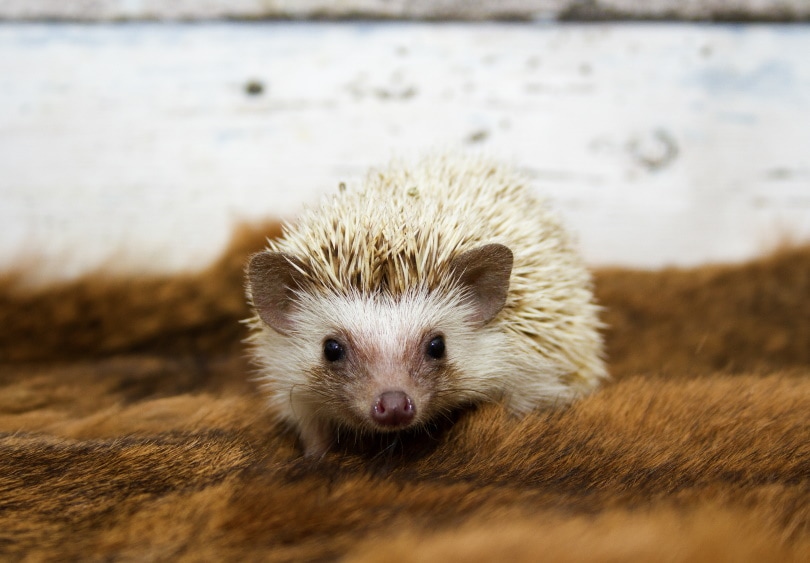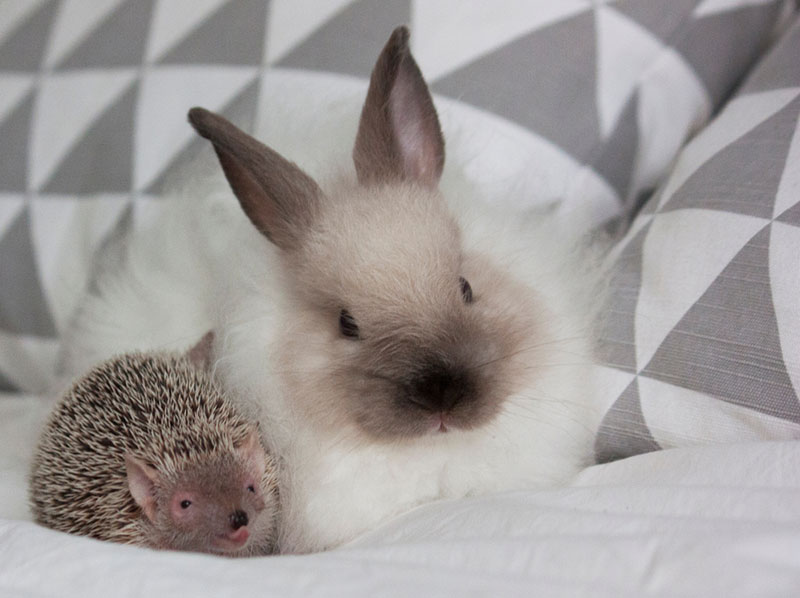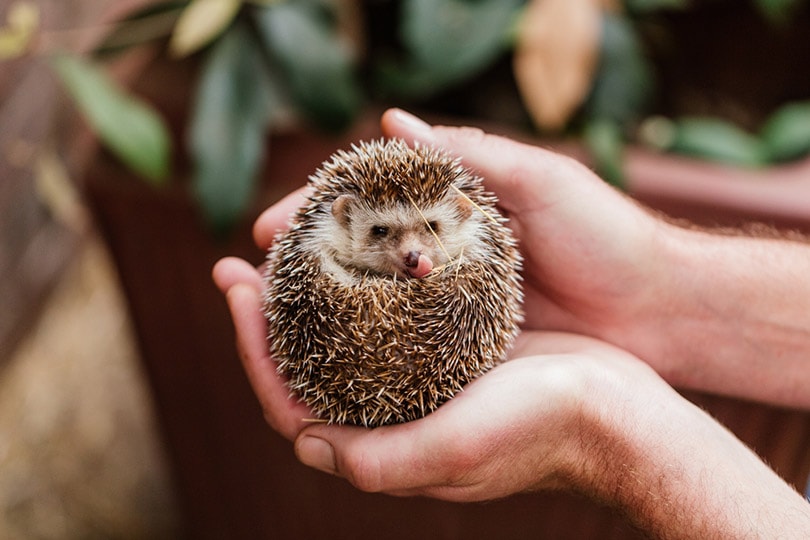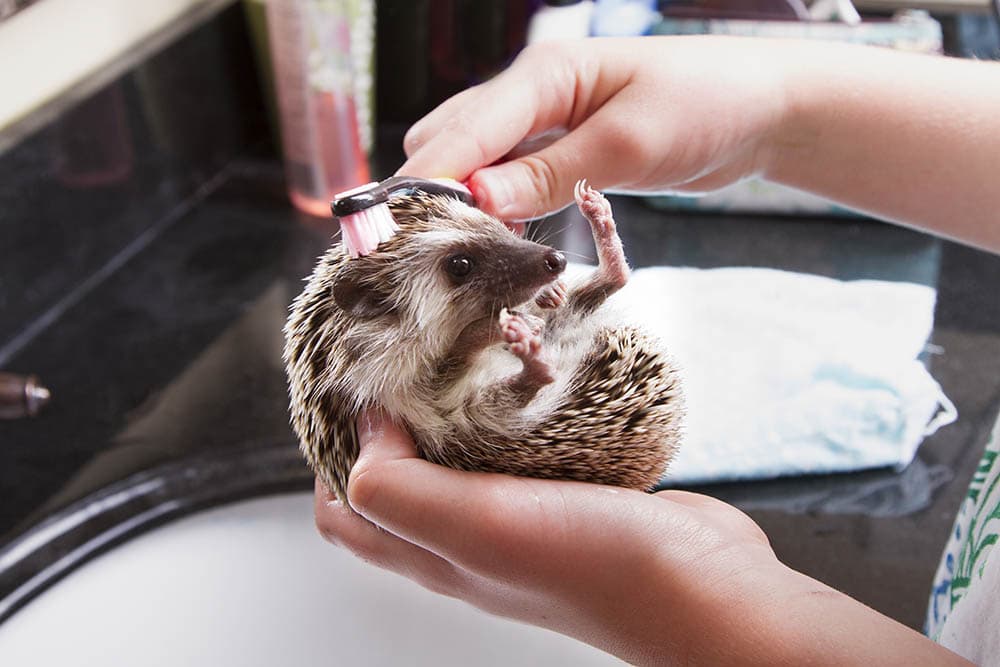
Click to Skip Ahead
Hedgehogs and porcupines look very similar, which makes many people confused as to whether these two animals are a separate species or if their coherently similar appearance is due to these two animals being related. You may be surprised to know that hedgehogs and porcupines are not even closely related, but rather two separate species (but indications of evolvement) who have different dietary and habitat requirements, as well as slight differences in appearance is mostly visible upon close inspection.
Both porcupines and hedgehogs possess sharp quills or spines that they use to defend themselves, which is the main contributing factor that leads many people to believe that these animals are related.
In this article, we will provide you with all the details and information that you need to understand the main differences between these two fascinating animals so that you can easily spot the difference between a hedgehog and a porcupine.
Visual Differences
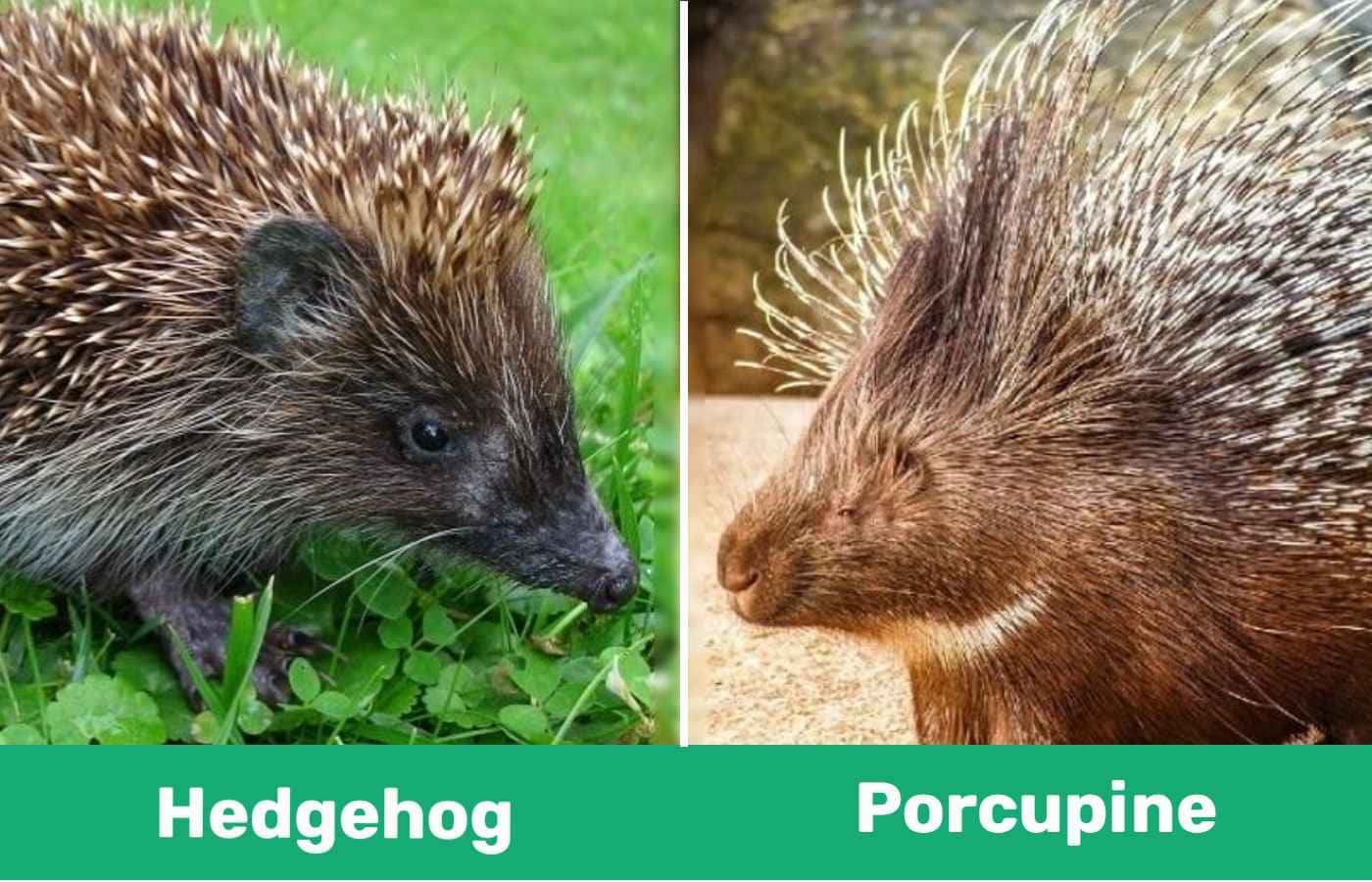
At a Glance
Hedgehog Overview

Characteristics & Appearance
In comparison to porcupines, hedgehogs only reach half the adult size which makes them smaller and more compact. Hedgehogs can range in colors from white, light brown, and even black and have several shades of color in the bands of their spines (hedgehogs do not have ‘quills’, and spines are the correct term). The belly and face of a hedgehog are covered in coarse hair and have small but powerful legs with large feet consisting of five toes on each paw.
The most obvious significance in a hedgehog’s appearance is the thick abundance of spines lining their back, which fills out most of their body from their neck to lower back. The spines are shorter and more solid than porcupines. These spines are made of the same material as human hair – thick modified keratin that has hardened to form spikes that stick upon their body. These spines are the same material and texture as human nails, but much thicker and solid shaft. The facial features a less prominent and close to their body. They do not have a defined neck and the body is round and stocky.
Hedgehogs are docile animals and can come off as shy. When a hedgehog feels threatened, they will roll themselves into a tight ball and become stiff. The spines will be slightly raised which can injure another pet or human if they try to handle or uncurl the hedgehog during this time. They do not shoot out their spines like porcupines do, but rather become sharp and uncomfortable to the touch.

Do Hedgehogs Make Good Pets?
Hedgehogs are nocturnal and most active during the night when you are sleeping, which can make them unsuitable pets for children or adults who prefer a pet that they can regularly interact with. Hedgehogs make popular pets in captivity and are referred to as ‘exotic’ pets. It is important to note that some regions have banned the practice of keeping hedgehogs, making it illegal to own these animals as pets without a permit in South Africa, California, and parts of North America, mainly due to their spines being harvested for the traditional practices or the diseases they may carry during transit.
However, the most useful aspect of owning hedgehogs is to experience caring and raising them. Hedgehogs have specific care requirements and many exotic pet owners find them to be rewarding pets.
Porcupine Overview
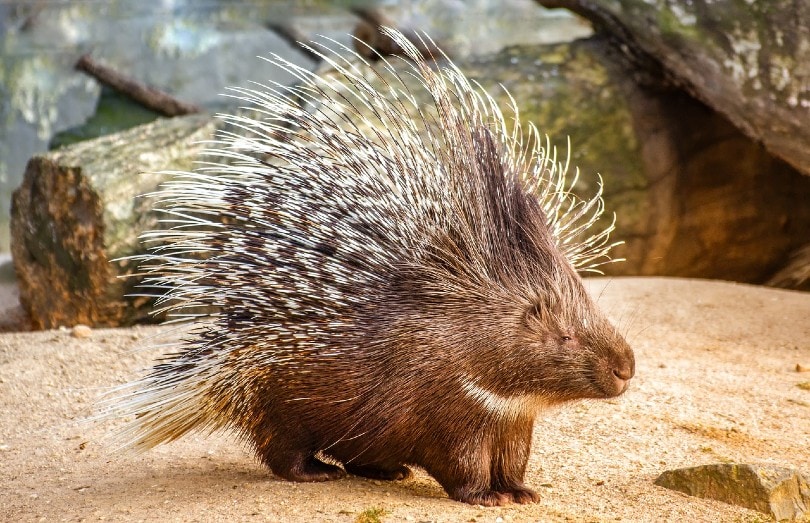
Characteristics & Appearance
Porcupines typically have a brown coloration with lighter cream quills, but they can also be seen with a yellowish coloration. They have a long, slender body with lengthy tails that can reach 10 inches in size. They have a hoggish head (long and prominent), small ears, with a descending forehead from their sloping snouts. Their legs are small and accompanied by paws with sharp, curving claws. The quills are long and hollow and range in size from 2 to 3 inches.
An adult porcupine has around 20,000 to 30,000 quills which they can release and shoot from their body when they feel threatened. These quills embed themselves in the ‘threat’ by puncturing the skin and muscle which can make them dangerous for both humans and other animals.
Once the quills have been released from their body, they will grow back to their full length. Their body hair is softer than hedgehogs, and the quills lie flat unless they feel threatened to which they will stand up straight and separate. These quills cover their entire back and extend past their body when these quills are relaxed and form a hard protective covering over their back.
In terms of temperament, porcupines are unpredictable yet shy and will not hesitate to shoot their quills if they even feel slightly threatened.
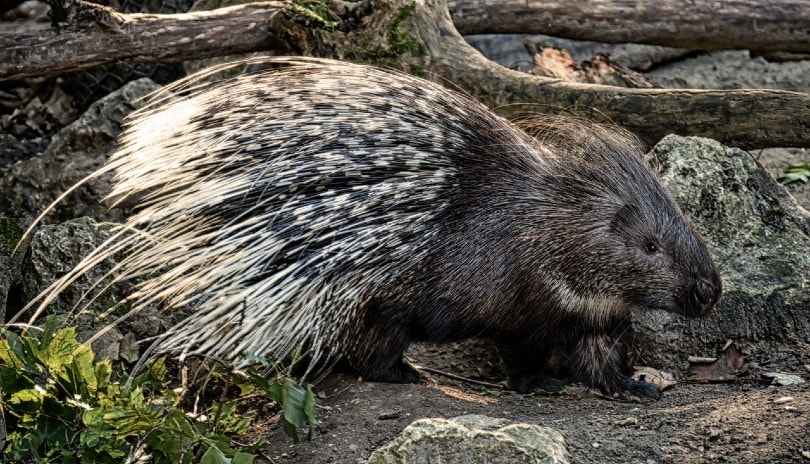
Do Porcupines Make Good Pets?
Porcupines do not make a good choice as pets, mainly due to their ability to severely injure their owners at any given time. Furthermore, porcupines are sought out for their quills which are used for trading purposes which makes them a protected species in various states. They do not enjoy being petted or handled, and their housing requirements are usually too complicated for the average person.
Most captive porcupines have been domesticated and kept by wildlife facilities, where they have large enclosures and minimal human interaction.
What Are the Differences Between Hedgehogs and Porcupines?
The main differences between hedgehogs and porcupines are distinguishable from their habitat, appearance, defensive mechanisms, and diet. Hedgehogs live in a wide range of habitats, from scrublands, deserts, and even suburban gardens. Whereas porcupines are found in forests, grasslands, and shrub-ridden deserts. In terms of appearance, porcupines are much larger than hedgehogs and have more defined quills. They have a darker body coloration and long tails.
A porcupine’s defensive mechanism is to shoot their quills from their body to harm the threat, whereas porcupines have a much gentler defensive mechanism and only curl into a ball to protect themselves. Porcupines eat bark and stems, fruit, leaves, and springtime buds, whereas hedgehogs are insectivores and eat worms, earwigs, millipedes, and slugs, and occasionally fruit.
Hedgehogs have spines (hardened hair), and porcupines have quills (sharp-tipped keratin hairs that overlap). However, it is acceptable to refer to spines as quills or vise versa, but the definitions do vary.
Which Breed Is Right For You?
Hedgehogs will understandably be the better option as a pet since they are more docile and their defensive mechanism does not involve shooting their spines which is not the case for porcupines. Furthermore, hedgehogs are more established as pets and plentiful in the pet trade industry, whereas it is difficult to care for and acquire a legal porcupine as a pet.
Hedgehogs are smaller and their dietary requirements are easier to provide in captivity, with many commercial pellet mixes being available. The cage does not have to be as large and complicated as it would if you were keeping a porcupine and most exotic pet owners will agree that hedgehogs are better pets than porcupines.
- Next on your reading list: Hedgehog Self-Anointing: What Is It and Why Do They Do It?
Featured Image Credit: Top: hedgehog, byapryl, Pixabay | Porcupine, Alexas_Fotos, Pixabay


